Thanksgiving Preparations; or, A Festive Platter, 1930-37
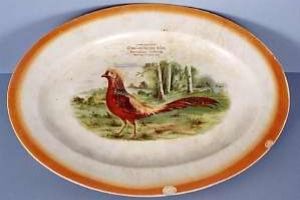
A blog post by Collections Manager Joanna Church. To read more posts by Joanna click HERE.
As Thanksgiving approaches, thoughts turn to family celebrations and all the preparations that go with them: making travel plans, or – if you’re the host or hostess – choosing recipes, decorations, and serving ware. After all, presentation is just as important as the food itself! If you’re feeling like your best china (or your favorite portable casserole dish) has been seen too many times before, now’s your chance to look around for something a bit different in advance of the holiday. May I suggest something with vintage flair, like our golden pheasant platter?
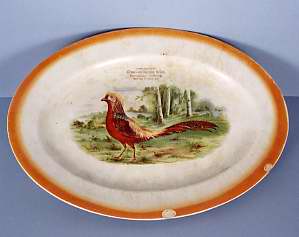
Full disclosure: I originally intended to write about turkeys, and was pleased to discover that we had a turkey platter… only to find upon closer examination that, no, it’s not a turkey. No matter; our friend Pheasant looks jolly enough, if a trifle startled, and the platter has a nice little story.
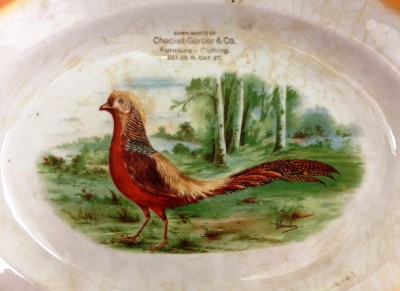
The dish was made by the Pope-Gosser China Company of Ohio in the 1930s. In that decade, the company got into the business of selling customized promotional pieces: plates, dishes, and mugs with a pretty picture and the name of the shop. For small stores around the country, these pieces served as permanent advertising (reminding you of their fine goods with every meal) and, if given away or sold for a tiny price, they also made a nice customer perk. In this case, our platter was made for Checket, Gerber & Co., a clothing and furniture store on N. Gay Street, Baltimore.
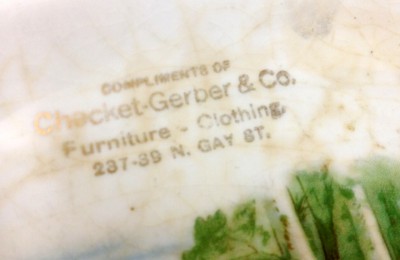
Checket, Gerber & Co. was a partnership between Jewish businessmen Henry W. Checket, Benjamin P. Checket, and Jacob Gerber. I’ve not found much about these gentlemen (other than that two of them belonged to Shaarei Tfiloh Congregation), but looking through various Baltimore City directories can help trace the evolution of the company. The shop originated with Henry’s father Hyman Checket, who had a clothing store on E. Baltimore St. in the early 1900s; Henry and Benjamin (perhaps a cousin?) were working for him by 1908, and Jacob Gerber joined the firm in the early 1910s. By 1926 the store had moved from E. Baltimore to 239 N. Gay St., and in 1930 the listing includes the storefront at 237. Gerber left the partnership by 1937, for that year’s directory lists it simply as Checket & Co Furniture, on N. Howard.
The platter was donated by Bonnie Amend Hoback, whose mother Louise acquired it during one of her shopping trips in East Baltimore and – based on the worn condition, including chips in the rim and some light staining under the glaze – used it for some years. Mrs. Hoback recalled, “My mother took me shopping in the 1930s on Gay Street. It was around Thanksgiving. I remember the many kindnesses shown to us. The children were always given something. My mother bought me a coat at this store, and a very kind gentleman took care of us. There was a potbelly stove on each floor . . . . They knew us as customers because my family shopped on Gay Street and Lombard Street all the time [although] our family was not Jewish.” These pleasant memories prompted Mrs. Hoback to donate the platter to the museum in 1994.
…And, while looking through the Jewish Times for a Checket, Gerber & Co. advertisement (no luck) I found my turkeys after all:
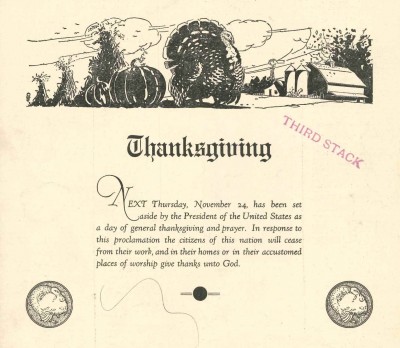
Happy Thanksgiving!
